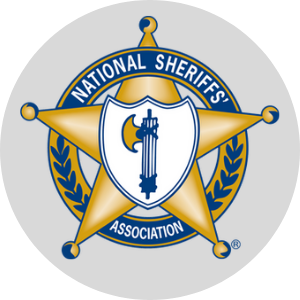ACTIVE SHOOTER TRAINING - Only One Line of Defense
A bottle of water, a smartphone, wireless headphones, a notebook, a highlighter, and a handful of black pens – not exactly the ideal defense against someone with a gun, but it’s all many students have.
.png?width=1500&name=ACTIVE%20SHOOTER%20TRAINING%20-%20Only%20One%20Line%20of%20Defense%20(1).png)
Learning how to respond to an active shooter in a classroom setting has been the most unusual piece of information many have acquired in college. Even more jarring has been the response many students – or lack thereof. Rather than digesting this potentially life-saving information, the newest photos on Instagram take precedence. Staring into their phones, inured to the reality of mass shootings in America.
Since 2006 there have been over 250 school shootings. And the survival advice given in some active shooter training is: Grab something you can throw.
We should give credit to active shooter training for sure. After all, these trainings have worked to pick up the slack of America’s mass-shooting epidemic, but it should be questioned if placing this dangerous burden on students and school faculty is truly the best that we can do.
San Diego Community College District Police Chief Joseph Ramos stated the importance of 'active shooter Training for potential victims, “All of it has to do with being in denial, being in shock, not recognizing what’s going on and not realizing that they have some options and they need to make some decisions quickly.”
Ramos, a former San Diego Police captain and SWAT commanding officer, has been following this topic for twenty-plus years, including teaching at the corporate level, speaking at the FBI National Academy, and providing training to law enforcement agencies in San Diego County on active shooter response and management.
According to Ramos, the district has a team of instructors, led by a sergeant, who attend training and then relay those messages to campuses several times a year. The meetings are open to all faculty and staff with the objective of offering options in the case that they are faced with an active shooter situation.
However, this training is not required and has left some faculty and staff unsure of their ability to act as the campus’ first line of defense.
A Mesa professor, who will not be named, shared that they have been hesitant to take a course. “I have been told that it has very realistic elements that can be unsettling.” They continued to state that they have researched such training and plan on taking it so that they are better equipped should such a threatening situation arise. “As a student, I would feel unsure of what to do in this scenario and would feel safer knowing there was a protocol in place,” they explained.
They also recognize that, as a professor who is hired to encourage growth in learning, facing such a tactical event may not come easy. “I would hope that I could be a strong leader for my class, but I also worry that I will not make the right call due to stress, a lack of training, or bad timing,” they shared.
Mesa Health Services’ Licensed Clinical Social Worker Linda Gibbins-Croft spoke to this apprehension by discussing the body’s natural response to fight, flight, or freeze in the face of danger. “There are ways to intentionally move oneself into a thinking process and help move conscious choice back into the mind,” she said. She also acknowledged that rational thought doesn’t always prevail. “There are just some situations when this doesn’t go as we would like, and a person moves into a more chaotic state.”
As a current college student laments..."Reflecting on all that I have learned about active shooter training, I can’t help but wonder how I would react if I was met with that last resort. Sure, I can say that I would grab the heaviest projectiles within my reach. Loud, distracting noises could be used to confuse the intruder – if only long enough to tackle them. And then suddenly, anger rushes over me as I realize that I am no longer simply responsible for learning – I’m now responsible for not getting shot at school, as are my professors and classmates. A dark, but honest truth in America."
For many, it took the COVID-19 pandemic to address this. With stay-at-home orders shutting down schools, the likelihood of being shot during a campus lecture has vanished. For two months, students and professors in America have been able to simply focus on schoolwork. But campuses will reopen and then it’s back to preparing for the potential threat. Comprehending this as a reality and most must accept the reality that nothing has been or will be done about it.
.png?width=1500&name=ACTIVE%20SHOOTER%20TRAINING%20-%20Only%20One%20Line%20of%20Defense%20(2).png)
This is where ASR Threat Alert Systems comes in. By providing an immediate and direct notification to law enforcement with the simple push of a button, schools across the nation can empower their faculty and students with a plan. Our sirens and strobes will distract the assailant, even possibly deterring action, even if only for precious seconds, so that more lives can be saved. With the simple push of a button, help is on the way, and response times potentially significantly decreased. In this way, life-saving help can be dispatched without the cognitive abilities traditionally needed for 911 to gather appropriate information for police and first responders to be sent.
Read original article here.





.png?width=75&height=75&name=ASR%20Active%20Shooter%20Response%20(1).png)
.png?width=75&height=75&name=ASR%20Active%20Shooter%20Response%20(2).png)
.png?width=75&height=75&name=ASR%20Active%20Shooter%20Response%20(3).png)











.png?width=150&height=150&name=ERCtA%20(1).png)


.png?width=150&height=150&name=PEPPM%20(1).png)
.png?width=150&height=150&name=Infragard%20(1).png)
